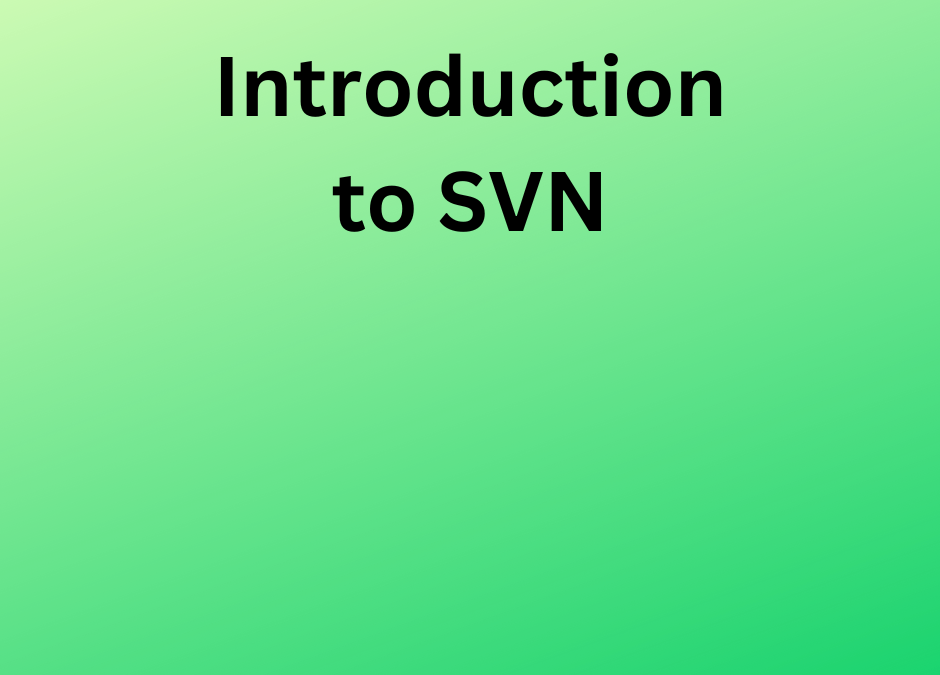Subversion (SVN) is a centralized version control system (VCS) that is commonly used in software development as a part of the DevOps process. It allows multiple developers to collaborate on a project by keeping track of changes made to files and directories over time. SVN is widely known for its stability, simplicity, and ease of use.
Here’s a brief introduction to SVN in DevOps:
- Centralized Repository: SVN follows a centralized model, where all the project files and their versions are stored in a central repository. Developers can check out a working copy of the project from this repository onto their local machines.
- Versioning and History: SVN maintains a complete history of changes made to files and directories. Each change is recorded as a revision number, making it easy to track and revert to previous versions if needed. This versioning allows teams to collaborate effectively and maintain a single source of truth for the project.
- Branching and Merging: SVN supports branching, which enables developers to create separate lines of development for specific features or bug fixes. Branching allows teams to work on different tasks simultaneously without interfering with each other’s work. Once the work is complete, branches can be merged back into the main trunk to incorporate the changes.
- Atomic Commits: SVN encourages atomic commits, which means that a commit should represent a logical unit of change. Developers can make several changes to files locally, but when committing to the repository, all the changes are bundled together as a single atomic transaction. This ensures that the repository remains in a consistent state and makes it easier to track changes.
- Conflict Resolution: In case multiple developers make changes to the same file concurrently, SVN helps identify and manage conflicts. When conflicting changes occur, SVN prompts the user to resolve the conflicts manually. Developers can compare the conflicting versions and make the necessary adjustments before committing the changes.
- Integration with Build Systems: SVN integrates well with build systems and other DevOps tools. Continuous integration (CI) systems can be set up to automatically build, test, and deploy code from the SVN repository. This integration helps streamline the development process and ensures that changes are validated and deployed smoothly.
- Access Control and Permissions: SVN allows administrators to define access control and permissions for different users or groups. This helps enforce security and restricts certain operations to authorized personnel only. Access control ensures that only authorized individuals can make changes to the repository and helps maintain the integrity of the project.
DevOps training in coimbatore is a program or course designed to provide individuals with the knowledge and skills required to adopt and implement DevOps practices in software development and IT operations. DevOps is a set of principles, practices, and tools aimed at fostering collaboration and communication between software development teams and IT operations teams, with the goal of delivering software more rapidly, reliably, and efficiently.
Overall, SVN is a popular version control system used in DevOps workflows, providing a solid foundation for collaboration, versioning, and history tracking. While it has been largely superseded by distributed version control systems like Git, SVN still finds use in many organizations, particularly in scenarios where a centralized model and tight access control are preferred.

